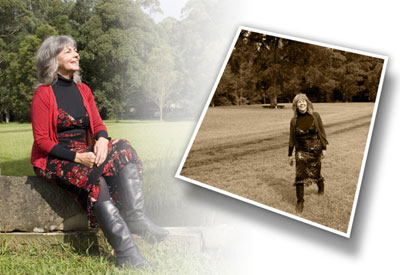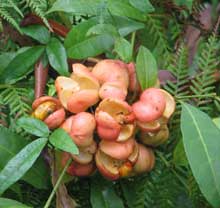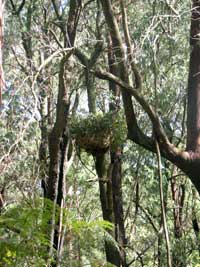 Early in March I went to the Coolah Tops National Park for the first time. Averaging 1100 metres, they offer what would be stunning views over the Liverpool and Breeza Plains—if the Hunter coalmines’ dust haze hadn’t got that far. But I’d actually come for the Coolah Tops Jazz Festival.
Early in March I went to the Coolah Tops National Park for the first time. Averaging 1100 metres, they offer what would be stunning views over the Liverpool and Breeza Plains—if the Hunter coalmines’ dust haze hadn’t got that far. But I’d actually come for the Coolah Tops Jazz Festival.

 Before the music began I did note that each ridge top was of loose basalt rocks, that screes on mountainsides were common, and that certain freestanding rocks were glaring rather balefully at the tourists snapping them.
Before the music began I did note that each ridge top was of loose basalt rocks, that screes on mountainsides were common, and that certain freestanding rocks were glaring rather balefully at the tourists snapping them.
Then the Bogalusa Strutters started strutting about, making music on the move and being cheeky. We left the rocks alone.
As the afternoon progressed towards evening, the Eskies and folding camp chairs multiplied, coats and beanies replaced the sunhats, and artists like the George Washingmachine Band and Julie O’Hara took to this stage at the edge of the world.
In between we had displays of Australian wildlife such as writhing but friendly pythons, a closely held crocodile and even an amiable Joanna Goanna.
NPWS guides led short bushwalks nearby for those who wanted to stretch their legs or slow down on the Shiraz.
It was a fun country sort of day in a great setting, where most people camped overnight nearby, after dancing in the dark on a dance ‘floor’ the size of a football field. Bit like picnic races I imagine.
 Apart from the many Eastern red-necked wallabies, I share my place with small groups of other hoppy marsupials.
Apart from the many Eastern red-necked wallabies, I share my place with small groups of other hoppy marsupials.






 Robert and Gail Bignell are friends, originally met when I interviewed Robert for an Owner Builder magazine story about his charming handmade bush cabin.
Robert and Gail Bignell are friends, originally met when I interviewed Robert for an Owner Builder magazine story about his charming handmade bush cabin.



 My forest does not have much understorey but in the damper dips and gullies there are always pockets of a small tree—scentless rosewood, Synoum glandulosum.
My forest does not have much understorey but in the damper dips and gullies there are always pockets of a small tree—scentless rosewood, Synoum glandulosum. As a lover of the physical fact of books—their weight and feel, their look and smell, and their cumulative presence as they cover my walls—I have not been in favour of eBooks.
As a lover of the physical fact of books—their weight and feel, their look and smell, and their cumulative presence as they cover my walls—I have not been in favour of eBooks. As you might expect, given that I live in forest country, I love trees.
As you might expect, given that I live in forest country, I love trees.
 Even when a tree is totally destroyed, its trunk broken off and laid low, taken from skydweller to ground hugger, it takes on new life as host. Like this mighty ancient, which blocked the track for some time until a big enough chainsaw came along.
Even when a tree is totally destroyed, its trunk broken off and laid low, taken from skydweller to ground hugger, it takes on new life as host. Like this mighty ancient, which blocked the track for some time until a big enough chainsaw came along.
 When walking along the forest tracks, I am usually so busy keeping my eyes directed downwards for snakes—and currently for the rare dry strips between the puddles—that I don’t often look up to the treetops.
When walking along the forest tracks, I am usually so busy keeping my eyes directed downwards for snakes—and currently for the rare dry strips between the puddles—that I don’t often look up to the treetops.